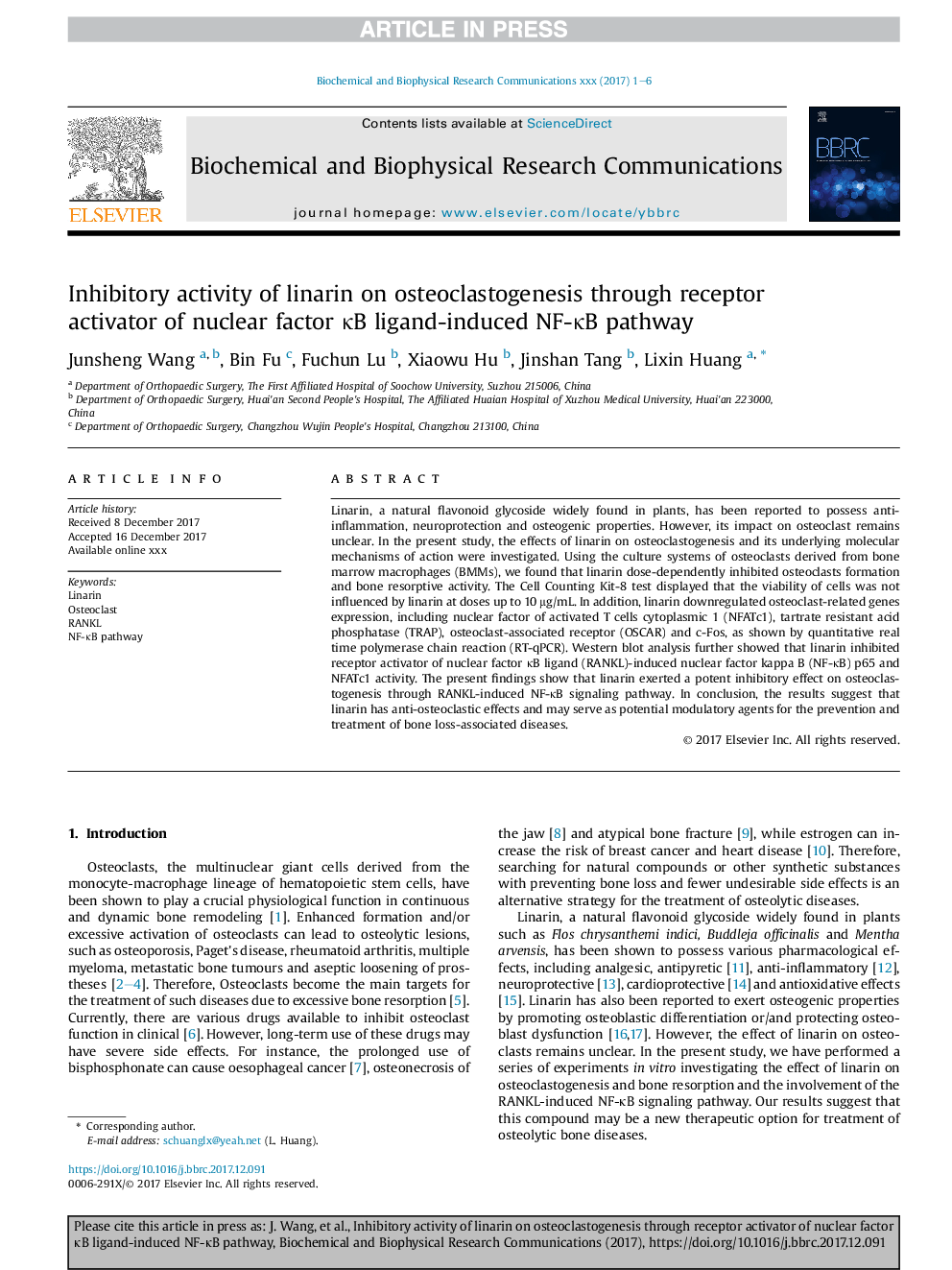| Article ID | Journal | Published Year | Pages | File Type |
|---|---|---|---|---|
| 8295034 | Biochemical and Biophysical Research Communications | 2018 | 6 Pages |
Abstract
Linarin, a natural flavonoid glycoside widely found in plants, has been reported to possess anti-inflammation, neuroprotection and osteogenic properties. However, its impact on osteoclast remains unclear. In the present study, the effects of linarin on osteoclastogenesis and its underlying molecular mechanisms of action were investigated. Using the culture systems of osteoclasts derived from bone marrow macrophages (BMMs), we found that linarin dose-dependently inhibited osteoclasts formation and bone resorptive activity. The Cell Counting Kit-8 test displayed that the viability of cells was not influenced by linarin at doses up to 10 μg/mL. In addition, linarin downregulated osteoclast-related genes expression, including nuclear factor of activated T cells cytoplasmic 1 (NFATc1), tartrate resistant acid phosphatase (TRAP), osteoclast-associated receptor (OSCAR) and c-Fos, as shown by quantitative real time polymerase chain reaction (RT-qPCR). Western blot analysis further showed that linarin inhibited receptor activator of nuclear factor κB ligand (RANKL)-induced nuclear factor kappa B (NF-κB) p65 and NFATc1 activity. The present findings show that linarin exerted a potent inhibitory effect on osteoclastogenesis through RANKL-induced NF-κB signaling pathway. In conclusion, the results suggest that linarin has anti-osteoclastic effects and may serve as potential modulatory agents for the prevention and treatment of bone loss-associated diseases.
Keywords
Related Topics
Life Sciences
Biochemistry, Genetics and Molecular Biology
Biochemistry
Authors
Junsheng Wang, Bin Fu, Fuchun Lu, Xiaowu Hu, Jinshan Tang, Lixin Huang,
